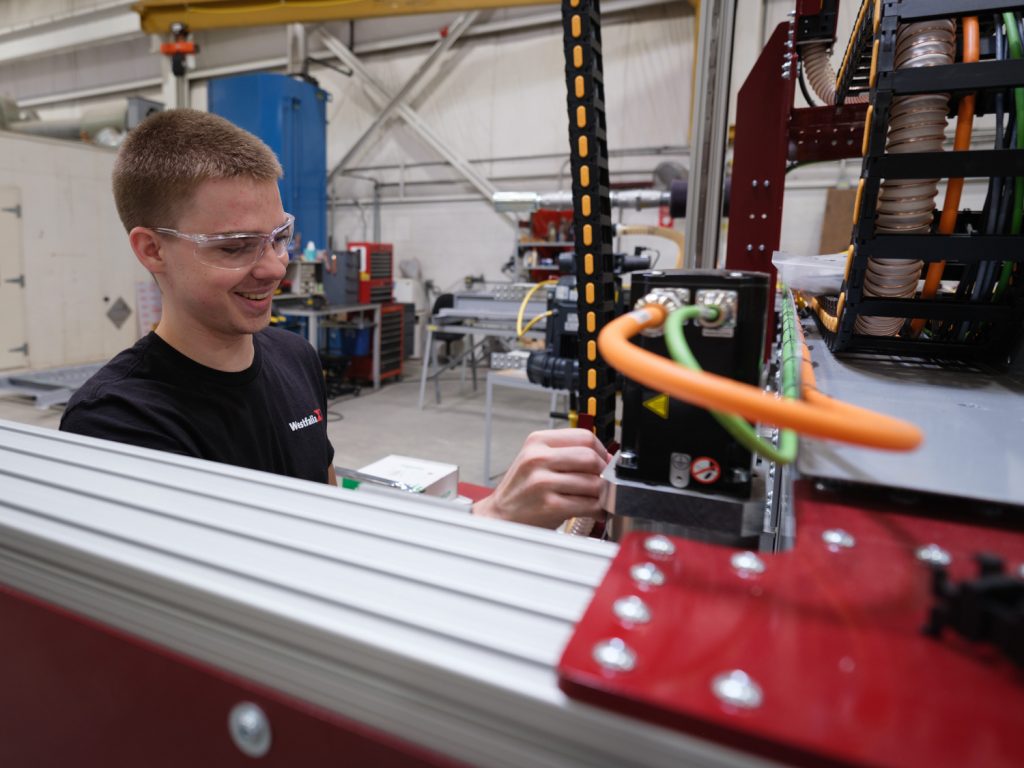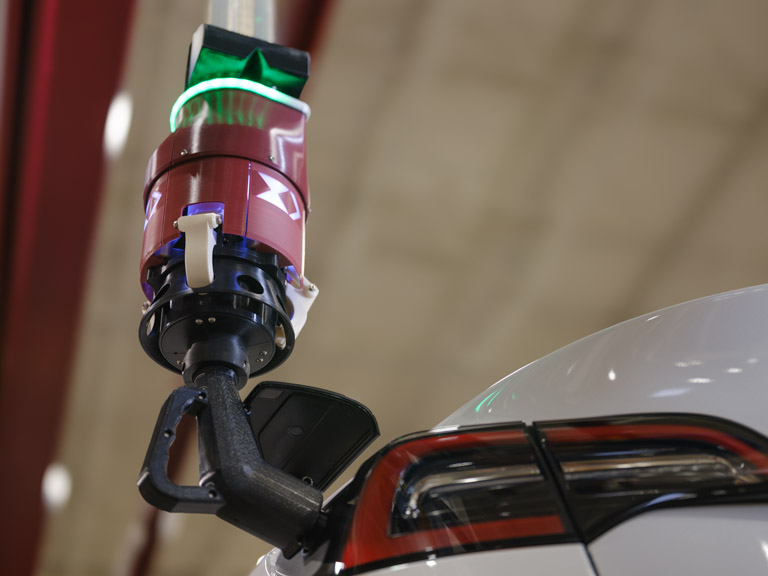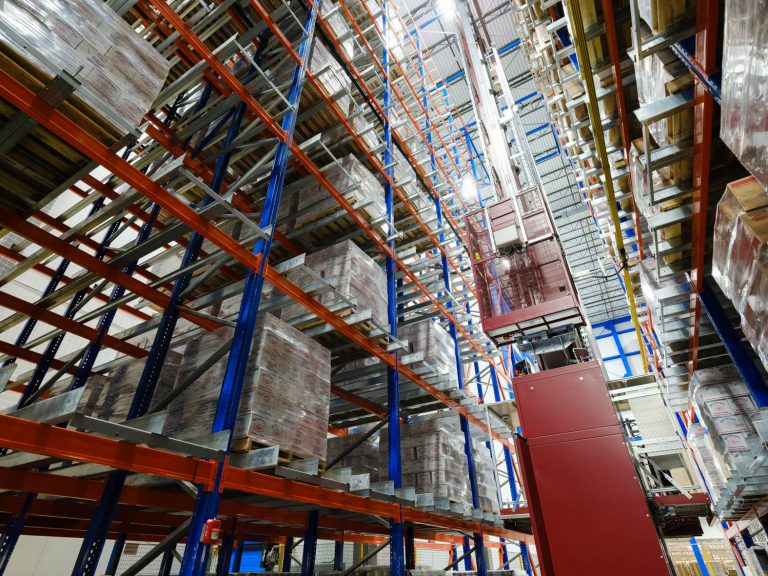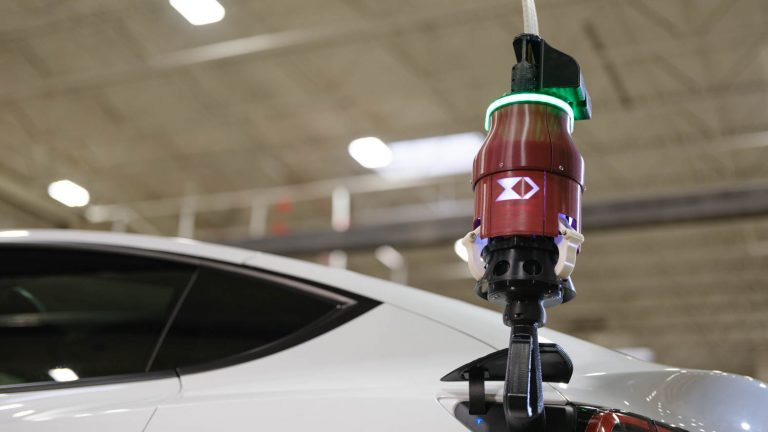The Warehouse Automation Symphony with Just One Conductor

Having spent years as a musician before entering the warehouse automation industry, I’ve discovered that the parallels between orchestral performance and integrated automation systems run deeper than most realize. It wasn’t until I started interviewing warehouse operators about their automation experiences and later sitting in on project reviews and engineering discussions, that I began to understand what separates successful projects from those that struggle with coordination issues. The more I learn about how warehouse automation truly succeeds or fails, the more I see that same fundamental truth I learned in music: harmony depends on more than talented players or quality instruments, it’s about how everything works together as one.
Let me paint you a picture that perfectly captures a common industry pitfall: an orchestra where the strings come from one manufacturer, the brass from another, the woodwinds from a third, and the percussion from yet another supplier. Each section comes with its own conductor, its own sheet music, and its own interpretation of how the piece should sound. When problems arise, each conductor blames the others while the audience suffers through the cacophony. This mirrors what happens when warehouse automation projects rely on an integrator dealing with multiple major vendors, each responsible for their component but none accountable for the complete system.
Throughout my marketing journey in the automation world, I’ve had the privilege of sitting with many warehouse operators, listening to their triumphs and challenges, learning what makes the difference. These interviews have revealed a pattern that mirrors what makes great orchestras great: unified vision, shared understanding, and complete accountability under a single, masterful conductor. This is the essence of vertical integration in warehouse automation. Design, engineering, manufacturing, software development, installation, and support all come from one source, creating the kind of operational harmony that transforms good warehouses into great ones.
The Hidden Costs of the Multi-Vendor Approach for Warehouse Automation
When businesses look to automate their warehouses, they often engage solution providers who position themselves as the ‘conductor’ and push for sourcing ‘best-in-class’ components from a range of specialist vendors. On paper, this multi-vendor approach seems logical. You select the premier conveyor system from Company A, the top-tier AS/RS from Company B, and the most advanced software from Company C. Many skilled integrators in our industry do excellent work managing these complex partnerships, and there are genuinely successful projects built this way.
The challenge lies in execution complexity. Consider what happens when these different systems need to communicate. Each vendor brings proprietary protocols, different data formats, and their own way of doing things. The warehouse management system speaks one language, the automated storage system another, and the picking platform yet another. Creating seamless communication between these systems requires extensive custom integration work, which often reveals incompatibilities only after significant time and capital investment.
The coordination challenges multiply when something goes wrong. With multiple vendors involved, troubleshooting can become an exercise in finger-pointing. The software vendor blames the hardware, the hardware manufacturer points to the controls, and the controls supplier says it’s a software issue. Meanwhile, operations grind to a halt while each vendor protects their interests rather than solving the problem. Skilled integrators work hard to manage these dynamics, but they’re fighting an uphill battle against fragmented accountability.
Beyond the scheduling headaches, these integration challenges create ongoing operational risks that can surface years later. When one vendor updates their system, it can trigger cascading compatibility issues throughout your entire operation. Here’s another scenario that keeps warehouse managers up at night: you end up incorporating equipment the vendor is quietly discontinuing while your integrator remains completely unaware.
The problem comes down to bandwidth and focus. There are usually too many parties involved in the multi-vendor approach for anyone to track what’s happening at each company. Even more frustrating is when a vendor suddenly changes their approach mid-project, or worse yet, closes its doors or gets bought out while your system is being installed. You’re left holding the bag while your integrator scrambles to find alternatives.
What sets our approach apart isn’t that we avoid these partnerships entirely, it’s that we sell ideas first. Our engineers take special care to create solutions that are novel and genuinely creative, approaches that most competitors simply don’t pursue. Where traditional integrators focus on assembling proven components, we’re designing systems that challenge conventional thinking about how warehouse automation should work. This creative foundation gives us the freedom to build truly integrated solutions rather than managing complex vendor relationships.
The Strategic Partnership Difference, Quality Over Convenience when Optimizing Warehouses
Now, let me be clear about something important before we dive deeper into vertical integration. When I talk about controlling every aspect of our automation systems, I’m not suggesting we manufacture every single bolt, sensor, or component from scratch. That would be both impractical and unnecessary. What sets our approach apart is how we think about the equipment we do source from other manufacturers.
Here’s where many integrators get it wrong: they treat component selection like a shopping trip, grabbing whatever wrapper, labeler, or palletizer happens to fit the immediate need or budget. Maybe it’s a new piece of equipment that looks promising on paper, or perhaps it’s simply the cheapest option that technically meets the specifications. This approach creates a patchwork of unfamiliar technologies that nobody on the team truly understands.
We do things differently. Every piece of external equipment we incorporate into our systems, whether it’s a high-speed wrapper, a vision system for quality control, or a sophisticated palletizer, undergoes years of testing and partnership development before it ever appears in one of our designs. We’re talking about partnerships that last for years, not convenient arrangements that change with every project.
Take our palletizing equipment, for example. We don’t just spec a palletizer and hope it works well with our systems. We’ve spent years understanding exactly how these machines behave under different conditions, how they respond to various product types, and most importantly, how they integrate with our Savanna.NET® warehouse management software that understands every aspect of the system. When a customer needs layer picking capabilities, we’re not experimenting with untested equipment. We’re deploying technology we’ve used in countless installations, with quirks we understand and solutions we’ve already developed.

This depth of knowledge becomes invaluable when something goes wrong. You know what’s worse than a breakdown? A breakdown with equipment that nobody on your team truly understands. When you’re dealing with a labeler that starts missing adhesion targets or a vision system that’s suddenly having trouble seeing shrink-wrap overhangs, you need people who’ve seen these problems before. Our field technicians know how to fix our core AS/RS systems, and they know the ins and outs of every piece of equipment we regularly incorporate, because we’ve been working with the same proven technologies for years.
The relationship aspect matters just as much as the technical knowledge. When we partner with equipment manufacturers, we’re building relationships that benefit our customers long-term. These partnerships mean we get priority support when issues arise, early access to updates and improvements, and most importantly, a direct line to engineers who understand how their equipment works within our complete systems.
It’s this combination of selective sourcing and deep partnership relationships that lets us offer true single-source accountability, even when we’re incorporating external equipment. We may not manufacture every component, but we take full responsibility for how everything works together, because we’ve done the homework to understand every piece of the puzzle.
The Vertical Integration Advantage of Understanding Every Note
Vertical integration in warehouse automation means one company controls the entire process, from initial design through ongoing support. This approach transforms how automation projects unfold and operate over their lifetime.
Think of it as the difference between a pickup band trying to play together for the first time versus a symphony orchestra that has rehearsed together for years. In a vertically integrated company, the mechanical engineers who design the equipment work directly with the software developers creating the control systems. The manufacturing team understands exactly what the installation crew needs. Support technicians know every component intimately because they were involved from conception. As a result, our team has an excellent understanding of each system before they ever see it in person.
This intimate knowledge translates into tangible benefits. When Westfalia’s engineers design a new automated storage and retrieval system, they’re not creating hardware for standalone applications, they’re designing solutions to specifically work with our Savanna.NET® warehouse execution system. Our Satellite® technology wasn’t developed in isolation but as part of a complete ecosystem where every component is optimized to work together.



The innovation cycle accelerates dramatically under vertical integration. When field technicians identify an opportunity for improvement, they can communicate directly with the engineers who designed the system. When software developers need to implement new functionality, they work hand-in-hand with the mechanical engineers to ensure the hardware can support it. This creates a continuous feedback loop that drives meaningful innovation based on real-world experience, with improvements realized in every new system we design and commission.
Responding to the Tempo of Modern Logistics with Speed and Agility
When you’re orchestrating the movement of massive volumes, like in beverage distribution or cold storage for food products, the ability to react quickly is critical. You’re constantly facing pressures like demands for faster turnarounds and higher throughputs, the sheer variety of SKUs that layer picking systems now handle, and the ever-present risk of disruptions. This means your automation can’t be a rigid monolith. Instead, it needs the built-in flexibility to adapt alongside these market realities.
Vertical integration provides this agility. When a customer needs a modification to their system, there’s no need to coordinate between multiple vendors, negotiate change orders with different companies, or worry about voiding warranties with one supplier by implementing another’s solution. The same team that designed and built the system can assess the need, develop the solution, and implement the change efficiently.
Consider a real-world scenario: a busy distribution center needs to add a vision system to automatically scan and verify product SKUs on pallets as they enter their automated storage system. This could be to enhance inventory accuracy, trace specific batch codes, or streamline receiving processes. In a multi-vendor environment, this seemingly straightforward upgrade might require:
- Sourcing a compatible vision system (cameras, lighting, processing unit) from a specialized third-party.
- Negotiating with the original AS/RS or conveyor vendor for physical mounting points, power, and data connections.
- Engaging a separate controls or software integrator to program the vision system and then bridge its data output with the existing Warehouse Execution System (WES) or Warehouse Management System (WMS).
- Managing multiple project teams, timelines, and potentially conflicting communication protocols, all while trying to ensure the new component doesn’t disrupt existing operations.
With Westfalia’s vertical integration, it’s a single conversation. Our team, already intimately familiar with your system and Savanna.NET®, can specify the appropriate vision technology, handle the mechanical and electrical integration, and seamlessly update the software to incorporate the new data. It’s one project plan, one point of accountability, and a guarantee that all components will work together cohesively from day one.
Quality Control and Maintaining Perfect Pitch
Quality in automation goes beyond individual components meeting specifications. It’s about how those components work together as a system. Vertical integration provides comprehensive quality control throughout the entire process.
When one company controls manufacturing, they can maintain consistent standards across all components. Parts are designed specifically to work together, reducing wear and improving reliability. Quality control measures consider the complete system rather than individual parts. This comprehensive quality control extends to software as well. In vertically integrated companies, software updates are tested against the actual hardware they’ll control, instead of relying solely on simulated environments. This reduces the risk of updates causing unexpected issues in the field.
Single-source accountability drastically reduces problem resolution times. When an issue occurs, there’s no debate over which vendor’s component is at fault; the integrated system provider takes ownership, leading to quicker fixes.
The Knowledge Symphony is Expertise Across Every Section
Perhaps the most underappreciated benefit of vertical integration is the depth of knowledge it creates within the organization. When a company handles every aspect of automation, from design through support, it develops expertise that’s impossible to achieve when focusing on just one piece of the puzzle.
This comprehensive knowledge benefits customers in numerous ways. Support technicians understand more than just the symptom they’re addressing. They understand the entire system and the reasoning behind its design. They can identify root causes more quickly and implement solutions that consider the complete operation. They can also anticipate how changes in one area might affect others, preventing problems before they occur.
The knowledge advantage extends to system design as well. Engineers who understand every aspect of the automation system can optimize designs in ways that specialists focused on individual components cannot. They can make trade-offs between different subsystems to achieve the best overall performance. They can identify opportunities for innovation that only become apparent when viewing the system holistically.
Composing Your Warehouse Automations for Tomorrow
In an industry where technology evolves rapidly, the ability to adapt and upgrade systems over time is crucial. Vertical integration provides unique advantages in future-proofing automation investments.
When one company controls all aspects of the system, they can plan upgrade paths that maintain compatibility while adding new capabilities. They can phase improvements to minimize disruption. Most importantly, they can ensure that customers are never left with orphaned technology because a vendor discontinued a product line or went out of business.
The recent challenges in global supply chains have highlighted another advantage: supply chain control. Vertically integrated companies can better manage component availability, find alternative solutions within their own ecosystem, and maintain consistent support even when external factors create disruptions.
Evaluating… Is Your Orchestra in Harmony?
For warehouse operators evaluating their current automation approach or planning new projects, several key questions can help assess whether vertical integration might offer advantages:
- How much time does your team spend coordinating between different vendors?
- When problems arise, how quickly can you identify the root cause and implement solutions?
- How confident are you that system upgrades from one vendor won’t create issues with others?
- Do you have a single point of contact who truly understands your complete operation?
- How well can your current system adapt to changing business needs?
If these questions reveal pain points in your current approach, it may be time to consider the benefits of working with a vertically integrated automation partner.
The Final Movement: Automation Harmony Through Integration
The warehouse automation industry stands at an inflection point. As systems become more complex and interconnected, a traditional multi-vendor approach faces increasing challenges. Integration costs rise, compatibility issues multiply, and the coordination overhead threatens to overwhelm the benefits of automation itself.
Vertical integration offers a compelling alternative. Like a symphony orchestra under a single conductor, it creates harmony where there was once discord. It accelerates innovation, improves reliability, reduces total cost of ownership, and provides the agility needed to thrive in today’s dynamic logistics environment.
For warehouse operators, the choice is more than selecting equipment or software. It’s about choosing a partner who can orchestrate all elements of automation into a seamless performance, for the long term. As the logistics industry continues to evolve, those who embrace the advantages of vertical integration will find themselves better positioned to adapt, grow, and succeed.
The question isn’t whether your warehouse automation needs to perform like a world-class orchestra. The question is whether you want multiple conductors on the podium, or one master who understands every note of your operational symphony.
For more insights into warehouse automation best practices and industry trends, be sure to explore the rest of our website or connect with our automation experts to discuss your specific operational challenges.



